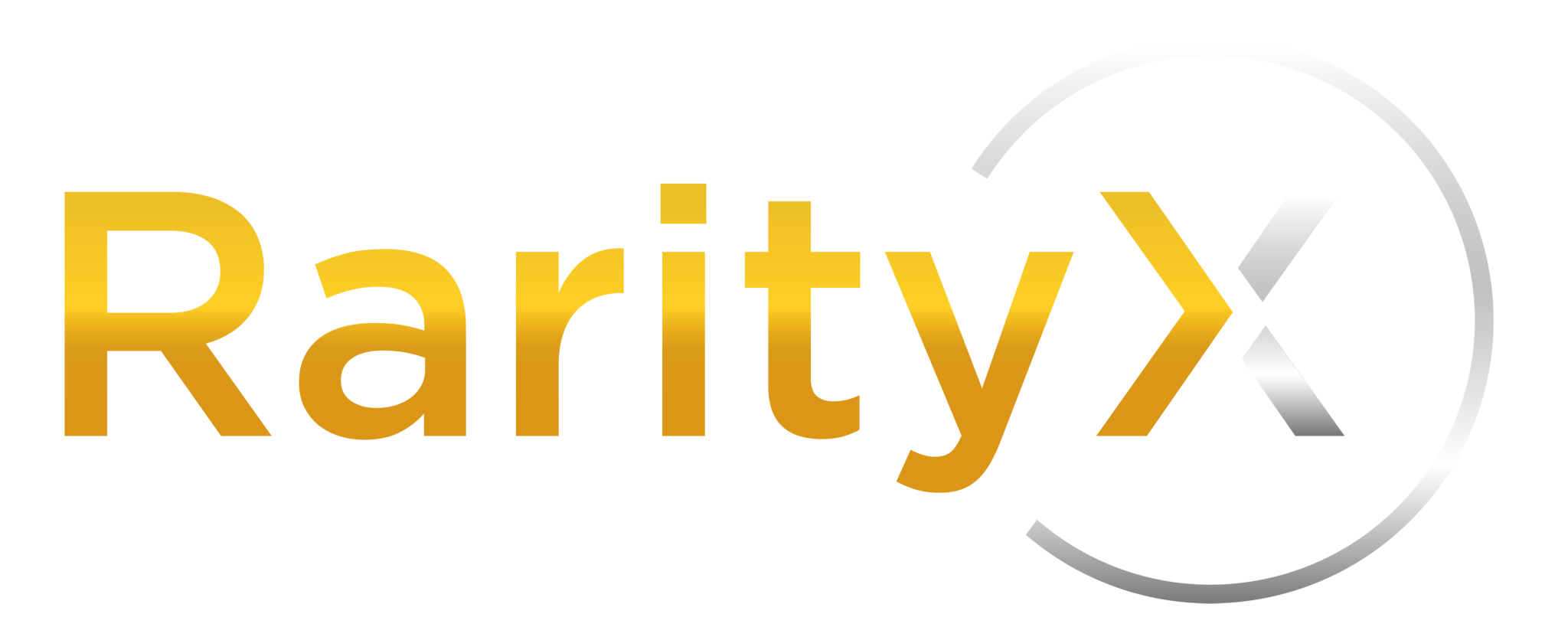The Future of Real World Asset Tokenization
The Future of RWA Tokenization: Franklin Templeton
Traditional institutions are increasingly considering the emerging idea of tokenizing assets that have long been their backbone, like gold, shares, and commodities, in a stunning shift in the financial environment. With major businesses like Franklin Templeton leading the way, the move toward asset tokenization is picking up speed. At the same time, Real World Asset (RWA) tokenization has been identified by Bank of America as a “key driver of digital asset adoption.” The market for tokenized assets is expected to grow to $16 trillion by 2030, setting the scene for a transformational future, according to Boston Consulting Group. RarityX is developing during this upswing as a potential player for the shift to fractional high-end collectible investments.

Real World Asset (RWA) Tokenization
Real World Asset (RWA) tokenization using blockchain technology is a groundbreaking development in finance. This process involves converting real-world, tangible assets like real estate or valuable collectibles into digital tokens on a decentralized and secure digital ledger known as a blockchain. The unique aspect here is that these assets can be divided into smaller digital tokens, enabling investors to own a fraction of the physical asset. What makes blockchain special is its tamper-resistant record-keeping and transparency. This ensures a secure and unchangeable record of ownership. Additionally, smart contracts on the blockchain automate transactions, reducing the need for intermediaries. RWA tokenization introduces new possibilities for making valuable assets more liquid, accessible, and available to a broader group of investors. This approach has the potential to reshape how we traditionally handle assets, bringing in increased efficiency, transparency, and inclusivity to the financial landscape.
Franklin Templeton Sets a Powerful Standard
A pioneer in the investment fund sector, Franklin Templeton, created history in 2021 when he unveiled the Franklin OnChain U.S. Government Money Fund. This fund stands out because of its innovative approach to asset tokenization. The fund first debuted on the Stellar blockchain before extending its reach to Polygon. Notably, it made history by being the first mutual fund registered in the United States to use a public blockchain for share ownership and transaction tracking.
Franklin Templeton’s action exemplifies how blockchain technology has the potential to completely transform the world of conventional investing. This development not only improves efficiency and transparency but also offers a glimpse into a day when commodities like gold and stocks may be securely and conveniently exchanged on blockchain platforms.
Bank of America Apprehends the Impact of RWA Tokenization
The recent recognition of Real World Asset (RWA) tokenization by the Bank of America as a “key driver of digital asset adoption” highlights the industry-redefining effects that technology is having on the financial sector. Their analysis indicates that over $1 billion has already been invested in the tokenized gold market. Additionally, there is an increase in demand for tokenized U.S. Treasury bonds as the combined market value of tokenized money market funds approaches $500 million, according to CoinDesk.
The admission by Bank of America emphasizes how tokenized assets are becoming a more dependable and viable path for investors. It also denotes a wider industry movement toward the adoption of distributed ledger technology and blockchain for conventional asset classes.
Leading the Transition to High-End Fractional Collectible Investments with RarityX
RarityX is playing a crucial role in smoothing the transition as the financial sector moves toward asset tokenization, especially in the area of high-end collectible assets. A wider spectrum of investors and collectors may utilize the platform since it gives fractional ownership of a variety of items.
RarityX enables collectors to buy and own a portion of precious and unusual goods, including exquisite art, rare coins, expensive collectibles, and more. Due to the democratization of ownership, investors and collectors may easily diversify their portfolios without having to make substantial financial sacrifices.
RarityX is making it easier and more accessible for conventional investors and collectors to enter the realm of fractional ownership in the newly developing era of tokenization. The platform’s safe and transparent design fits in nicely with the changing asset tokenization scenario.
Risks and Challenges in Tokenization
While the initiatives by financial giants like Franklin Templeton and Bank of America signal a transformative era in asset tokenization, the road ahead is not without its challenges. The very innovation that underpins blockchain, while promising enhanced efficiency and transparency, presents obstacles such as scalability and interoperability. As the adoption of tokenization grows, addressing these scalability issues becomes imperative to ensure seamless transactions and prevent network congestion. Additionally, achieving interoperability between different blockchain platforms poses a complex challenge that requires industry-wide collaboration.
In the case of RarityX, as it paves the way for fractional ownership in high-end collectibles, the challenge lies in maintaining the delicate balance between accessibility and security. As more diverse investors and collectors engage with the platform, robust security measures must be continuously developed and updated to safeguard against potential cyber threats and fraudulent activities. Furthermore, educating users about the intricacies of tokenized ownership and ensuring a user-friendly experience are ongoing challenges that RarityX and similar platforms must navigate.
A Bright Future
Looking to the future, the promising outlook for tokenization is tempered by regulatory uncertainties. The evolving regulatory landscape may introduce complexities in compliance and oversight, requiring adaptation and collaboration between industry players and regulatory bodies to establish clear guidelines. Additionally, the broader public’s understanding and acceptance of tokenized assets represent another hurdle. Overcoming skepticism and ensuring widespread comprehension of the benefits and risks associated with tokenization are critical for the envisioned mainstream adoption.
Despite these challenges, the contributions of pioneers like Franklin Templeton and Bank of America, along with the role played by RarityX, indicate a commitment to overcoming obstacles in the journey toward mainstream asset tokenization. The predicted market growth, while impressive, necessitates a proactive approach in addressing challenges to ensure the realization of tokenization’s transformative potential. As financial institutions and platforms like RarityX unlock significant financial potential in the realm of tokenization, collaborative efforts will be key to mitigating challenges and building a sustainable foundation for the future of this dynamic financial landscape.
